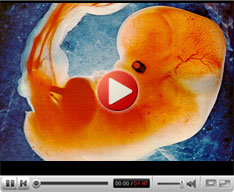Myomectomy
A myomectomy is a surgical procedure to remove fibroids from the uterus. The main aim of the surgeon is to leave the uterus intact and retain its normal structure which is important if the woman is planning to have children.
Fibroids are benign growths inside the uterus. Many women will develop fibroid which is common with increasing age. There are four kinds of fibroids:
- Subserosal which grows on the outside surface of uterus
- Submucosal which grows on the inside surface of the uterus
- Intramural which grows inside the muscular wall of the uterus
- Pedunculated which grows as a separate attachment to the uterus
Symptoms of myomectomy
Some women with fibroids experience no symptoms at all. However in other cases, fibroids may cause the following symptoms which may need treatment:
- Heavy menstrual bleeding that has not improved with medication
- Low levels of iron and anaemia
- Trouble getting pregnant
- Bladder and bowel problems
- Risks during pregnancy such as preterm birth and miscarriage
- Pelvic pain
Myomectomy Procedure
A myomectomy procedure can be performed inmany ways depending on the size, location and number of fibroids. Surgical methods for myomectomy include:
- Hysteroscopy: Hysteroscopy involves inserting a small viewing instrument through the vagina and into the uterus. This technique is performed to remove fibroids present on the inner wall of the uterus that have not grown deep into the uterine wall. It is done as an outpatient procedure. It may take a few days to 2 weeks to recover and resume daily activities.
- Laparoscopy: It makes use of a viewing instrument called a laparoscope through one or more incisions that are made in the abdomen. Laparoscopy is usually recommended for removing one or more fibroids that grow on the outside of the uterus. It may be an outpatient procedure or may need a stay of 1 day at the hospital. Recovery time is about 1 to 2 weeks.
- Laparotomy: It requires a larger incision in the abdomen and is performed to remove large fibroids, which are many in number or those that have grown deep inside the uterine wall. This procedure is also carried out to correct urinary or bowel problems. It requires an average stay of 1 to 4 days in the hospital. Recovery time ranges from 4 to 6 weeks.
Risks of myomectomy
Risks of myomectomy include:
- Scar tissue
- Excessive blood loss
- Infection of the fallopian tubes, uterus and ovaries
- Injuries to the bladder or bowel
- Complications during child birth
- Development of new fibroids
- Inability to restore the normal structure of the uterus

















